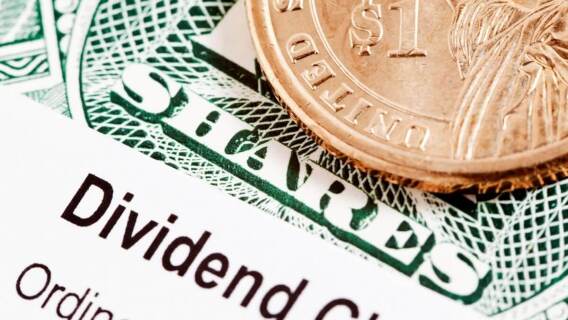With interest rates back to zero, high, reliable yields are hard to come by. Which makes these two high-yield dividend stocks stand out.
This crazy coronavirus market has created high-yield opportunities the likes of which have not been out there since the financial crisis. And you haven’t missed your chance to cash in on the best high-yield dividend stocks in a decade.
Sure, the market has bounced back already. The S&P 500 is now back to only 10% below the all-time high. But the index is skewed with a lopsided allocation in large technology companies, which are doing well. The vast majority of stocks on the index are still down 20% or 30% and more in some cases.
The lower prices have raised the yield in the dividend-paying stocks. In fact, you can find high yields all over the place. But beware: In most cases, those yields are high because the stock price fell because business is way down. Many of these companies will have to cut the dividend to free up cash. Many of these oh-so-juicy yields are a dividend trap. You can wind up with a lot less income and a plummeting price.
[text_ad]
However, certain well-chosen companies are uniquely enabled to maintain the dividend through the crisis. Those yields are real. This market has created certain opportunities where you can not only get great stocks at bargain prices, but you can also collect a higher level of income than has existed in over a decade.
I found two such investments.
The 2 Best High-Yield Dividend Stocks in a Decade
Best High-Yield Dividend Stock #1: Altria (MO)
Yield: 8.60%
Altria Group (MO) is the largest U.S. domestic cigarette maker and one of the largest in the world. The company is the domestic part of the old Philip Morris that spun off the international division in the form of Philip Morris International (PM) in 2008. Altria now operates primarily in the United States.
In addition to cigarettes, Altria also sells e-cigarettes, marijuana, beer, wine, and smokeless products. Altria also owns a 10.2% stake in the world’s largest brewer, Anheuser-Busch InBev (BUD). It may seem like a diversified company but it really isn’t. About 85% of net revenues are generated from cigarettes and the overwhelming majority of that is from its flagship Marlboro brand, which commands a stratospheric 40% plus cigarette market share in the U.S.
That’s a problem. In case you haven’t heard, cigarettes are bad for you. The volume of cigarette smoking is declining by about 4% to 6% per year. Of course, it has been declining at about 4% for decades. And over that time Altria has been able to more than compensate for the declines by raising prices and buying back shares. The company still grew annual earnings at a solid rate and had been one of the best-performing large-cap stocks in the index.
But things are changing.
The rate of annual volume declines is increasing because more people are opting for E-cigarettes, especially young smokers. To answer that problem, Altria purchased a 35% stake in dominant e-cigarette brand JUUL in late 2018 for $12.8 billion. It has since been the acquisition from Hell. JUUL has been under relentless assault by regulators primarily for marketing to young people. There is now even a question if e-cigarettes will be allowed to operate at all.
Altria has already written down $8.6 billion of the investment. The market hasn’t liked this and the stock is down about 50% from the 2017 high and near a 5-year low.
But here’s the thing. If e-cigarettes get sued out of business Altria will sell more cigarettes. If e-cigarettes survive, Altria owns the dominant company in the space. It will ring the register either way. Plus, Altria has other growth opportunities in marijuana (it purchased a 45% stake in Cronos) and a joint venture with Philip Morris International to sell heated tobacco e-cigarette product iQos nationally.
In the meantime, the company continues to grow earnings per share. Management is forecasting high single digit annual growth for the next several years. Earnings grew over 18% in the first quarter as people are smoking more during the pandemic.
The Dividend
Is that massive 8.9% yield safe? I think it is rock solid. The company has a rather high 80% payout ratio, but that is the historical average. And the company has raised the payout every year for the last 50 years.
The company is growing earnings and has been consistently doing so for decades. Investors are not seeing the value right now. But the stock is dirt cheap, and probably has limited downside in another downturn and a good prognosis for future appreciation. And that yield is phenomenal.
Best High-Yield Dividend Stock #2: Enterprise Product Partners (EPD)
Yield: 8.60%
Enterprise is one of the largest midstream energy companies in the country with a vast portfolio of service assets connected to the heart of American energy production. It has $36 billion in annual revenues from an unparalleled reach in the industry that is connected to every major U.S. shale basin and 90% of American refiners east of the Rockies, and offers export facilities as well in the Gulf of Mexico.
The energy sector is getting killed by this pandemic as demand has fallen off a cliff during the lockdown. Oil prices have crashed and energy has been the worst-performing stock sector during this recession. But, as a midstream energy company, Enterprise makes money from the services of piping and storing oil and gas. It isn’t highly exposed to energy prices but makes its money on the fact that there is a lot of oil and gas sloshing around this country. And the U.S. is now the world’s largest producer of oil and gas.
That said, Enterprise makes money on volumes going through its systems. Those volumes have been diminished during the crisis, temporarily. But midstream companies are not taking it on the chin like most of the energy sector. And volumes will resume with the economic restart.
The Distribution
Because of the financial devastation brought by the pandemic-induced lockdowns, many companies in the energy sector will be forced to cut dividend and distribution payouts to free up cash in order to survive. That will also include many midstream companies.
But Enterprise is highly likely to maintain or even grow its distribution. As a Master Limited Partnership (MLP), EPD pays out the bulk of earnings in the form of distributions. But, unlike most MLPs, EPD has only about a 60% payout ratio of funds from operations. The partnership keeps it low so it can fund growth projects internally. But it has since suspended those investments for the remainder of the crisis.
That frees up that money to pay the distribution. As well, the partnership began this crisis in better financial shape that any of its peers with low debt and a strong cash position. It has $6.5 billion in cash and cash equivalents from which to pay $4 billion in annual distributions.
Enterprise can easily weather a bad year and maintain the payout. The company also has a track record of raising the distribution every single year since its IPO in 1998 to defend.
With a huge yield that is safe, and an absurdly low price, currently 53% below the all-time high, EPD offers one of the best income opportunities in many years as well as the potential for strong capital appreciation over time.
In my mind, those are the two best high-yield dividend stocks in the last decade. Now, if you want to know what other dividend stocks I like now - some of the high-yield variety, others more focused on dividend growth and safety - you can subscribe to my Cabot Dividend Investor advisory. I have three portfolios comprised of 16 dividend-paying stocks, nine of which have either double- or triple-digit returns!
Click here to learn their names.
[author_ad]

